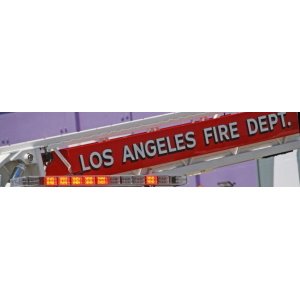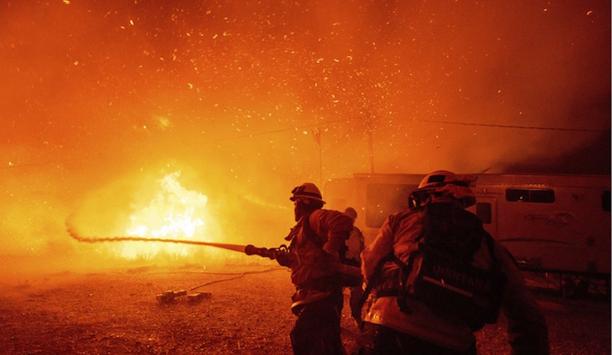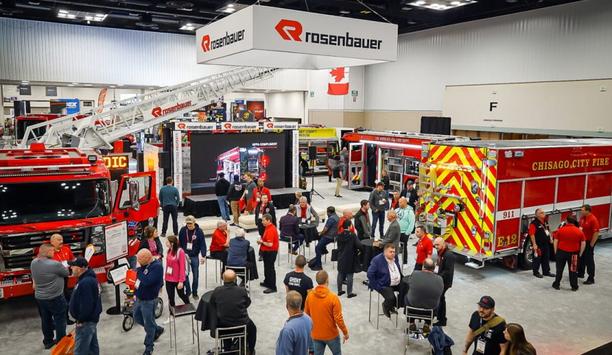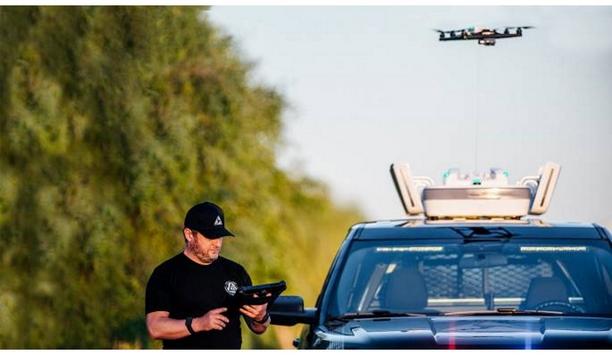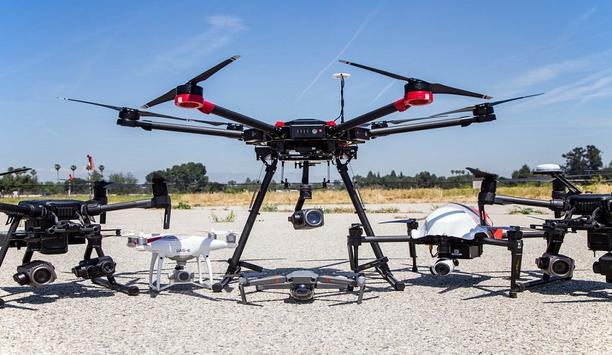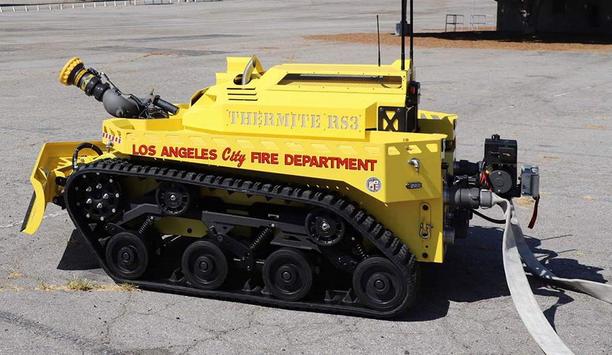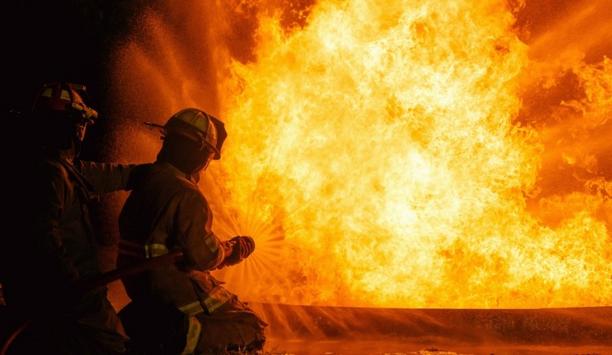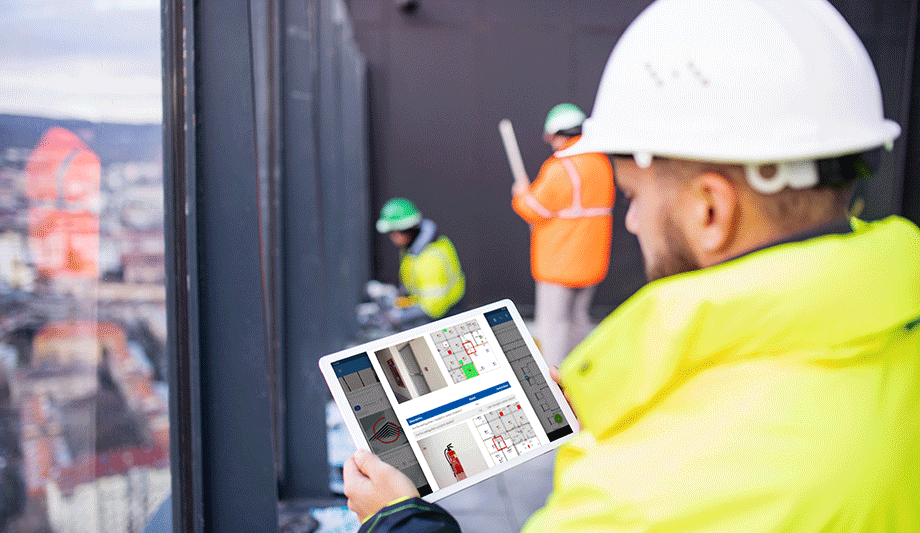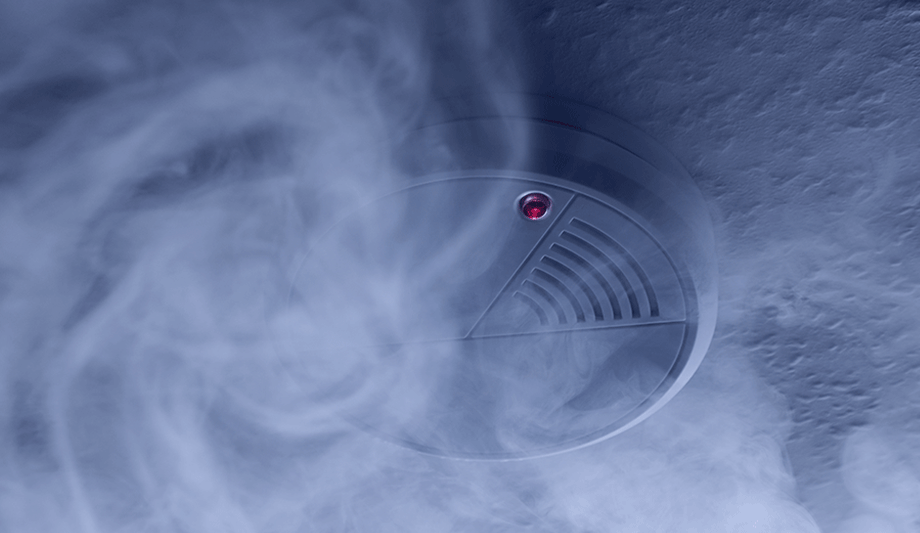LAFD - Experts & Thought Leaders
Latest Los Angeles Fire Department news & announcements
Firefighters fought to maintain the upper hand on a huge and rapidly moving wildfire that swept through rugged mountains north of Los Angeles and resulted in more than 50,000 people being put under evacuation orders or warnings. The Hughes Fire broke out late Wednesday morning and, in less than a day, had charred nearly 16 square miles (41 square kilometers) of trees and brush near Castaic Lake, a popular recreation area about 40 miles (64 kilometers) from the devastating Eaton and Palisades fires that are burning for a third week. Warning for critical fire risk Though the region was under a red flag warning for critical fire risk, winds were not as fast as they had been when those fires broke out, allowing for firefighting aircraft to dump tens of thousands of gallons of fire retardant on the latest blaze. By Wednesday night, about 14% of the Hughes Fire had been contained. “The situation that we’re in today is very different from the situation we were in 16 days ago,” Los Angeles County Fire Chief Anthony Marrone said Wednesday evening. Palisades and Eaton fires Red flag warnings were extended through 10 a.m. Friday in LA and Ventura counties Red flag warnings were extended through 10 a.m. Friday in LA and Ventura counties. Officials remained concerned that the Palisades and Eaton fires could break their containment lines as firefighters continue watching for hot spots. An evacuation warning was issued for Sherman Oaks after a brush fire broke out on the Sepulveda Pass near the I-405 Freeway. The blaze was first reported just after 11 p.m. Wednesday, but the Los Angeles Fire Department announced early Thursday that forward progress had been stopped at about 40 acres (16 hectares) and the evacuation warning was lifted. No structures were damaged and no injuries were reported, fire officials said, but firefighters remained at the scene. Water-dropping aircraft More than 31,000 people have been ordered to evacuate from the Hughes Fire, and another 23,000 are under evacuation warnings, LA County Sheriff Robert Luna said. There were no reports of homes or other structures burned. Parts of Interstate 5 near the Hughes Fire that had been closed reopened Wednesday evening. A 30-mile (48-kilometer) stretch of the major north-south artery had been closed for emergency vehicles, to move equipment and to prevent accidents due to smoke billowing across it. Crews on the ground and in water-dropping aircraft tried to prevent the wind-driven fire from moving across the interstate and toward Castaic. Fire retardant on the south side of the fire Aircraft crews were able to drop fire retardant on the south side of the fire Marrone said that because winds were not as strong as they were two weeks ago, aircraft crews were able to drop fire retardant on the south side of the fire, where the flames were moving, he said. More than 4,000 firefighters were assigned to the fire, he said. Winds in the area were gusting at 42 mph (67 kph) in the afternoon. They had reached as high as 65 mph (105 KPH) in some mountain pockets by Wednesday night, according to David Roth, a meteorologist with the National Weather Service. Castaic’s Stonegate neighborhood Kayla Amara drove to Castaic’s Stonegate neighborhood to collect items from the home of a friend who had rushed to pick up her daughter at preschool. As Amara was packing the car, she learned the fire had exploded in size and decided to hose down the property. “Other people are hosing down their houses, too. I hope there’s a house here to return to,” Amara said as police cars raced through the streets and flames engulfed trees on a hillside in the distance. Amara, a nurse who lives in nearby Valencia, said she’s been on edge for weeks as major blazes devastated Southern California. “It’s been stressful with those other fires, but now that this one is close to home it’s just super stressful,” she said. Fire-impacted communities Fire crews were filling sandbags for communities while county workers installed barriers To the south, Los Angeles officials began to prepare for potential rain even as some residents were allowed to return to the charred Pacific Palisades and Altadena areas. Gusty weather was expected to last through Thursday and precipitation was possible starting Saturday, according to the weather service. “Rains are in the forecast and the threat of mud and debris flow in our fire-impacted communities is real,” Supervisor Kathryn Barger said during a Wednesday morning news conference. Fire crews were filling sandbags for communities while county workers installed barriers and cleared drainage pipes and basins. Latest Santa Ana wind event Los Angeles Mayor Karen Bass warned that winds could carry ash and advised Angelenos to visit the city’s website to learn how to protect themselves from toxic air during the latest Santa Ana wind event. LA County public health director Barbara Ferrer cautioned that the ash could contain heavy metals, arsenic and other harmful materials. “Even a brief exposure can potentially cause skin irritation and lead to more serious problems,” Ferrer said Wednesday, asking people to wear protective gear while cleaning up. Victims of wildfires Containment of the Palisades Fire reached 70%, and the Eaton Fire was at 95% California Republicans are pushing back against suggestions by President Donald Trump, House Speaker Mike Johnson and other Republicans that federal disaster aid for victims of wildfires should come with strings attached. Trump plans to visit the state to see the damage firsthand Friday, but it wasn’t clear whether he and Democratic Gov. Gavin Newsom will meet during the visit. The low humidity, bone-dry vegetation and strong winds came as firefighters continued battling the Palisades and Eaton fires, which have killed at least 28 people and destroyed more than 14,000 structures since they broke out Jan. 7. Containment of the Palisades Fire reached 70%, and the Eaton Fire was at 95%. Causes of the fires Luna said Wednesday his department was still investigating 22 active missing person reports in both fire zones. All reported missing are adults, he said. The federal Bureau of Alcohol, Tobacco, and Firearms is investigating the causes of the fires but has not released any findings. Several lawsuits have been filed by people who lost their homes in the Eaton Fire, alleging Southern California Edison’s equipment sparked the blaze. On Tuesday, a judge overseeing one of the lawsuits ordered the utility to produce data from circuits in the area where the fire started.
3,400 square meters, 129 employees, 14 vehicles, and 2 exhibits at the Fire Station of the Future – this is the key data for Rosenbauer’s impressive appearance at the FDIC International 2023 show, which took place from April 27 to April 29, 2023, in Indianapolis, Indiana, United States of America (USA). In addition to numerous innovations such as the RTE Robot, the RFC Battery extinguishing system and the E-Rescue, an electric vehicle on a commercial chassis for the American market, the RTX was the real trade fair highlight for Rosenbauer. And not one highlight, but three, as three RTXs from Rosenbauer were on display at the Indiana Convention Center. Rosenbauer’s new RTX on exhibit LAFD’s positive experience with the RTX has laid the foundation for Rosenbauer’s strategy on e-mobility in the US After the Los Angeles Fire Department’s brand new RTX was first introduced to the public in 2022, the company was faced with the challenge of how to convince their customers that Rosenbauer’s electric vehicles can provide the answer to the questions of the future today. LAFD’s positive experience with the RTX has laid the foundation for Rosenbauer’s strategy on e-mobility in the US market. On September 12, 2022, the RTX was placed in operational service after appropriate training at Station 82 – Hollywood Boulevard, and has been a success story ever since. Engine 82 (Name of the vehicle in LAFD usage) has so far: Completed 1.482 operations Been in operation for 1.185 hours Performed 98.65% of operations purely electrically Rosenbauer's solutions at FDIC International 2023 These conclusive numbers have spurred Rosenbauer on to offer their customers a confident and exclusive experience at FDIC International 2023. In addition to LAFD’s RTX at Rosenbauer’s main booth, there were two other RTXs at the convention center – and even in operational mode. Selected customers were, therefore, able to book an RTX Experience Tour, which lasted over one and a half hours. In total, the tour included three stations with different focuses: Station 1: RTX LAFD (20 minutes) The history of the RT/RTX project. The vehicle architecture optimized for fire departments, made possible by the electric drive. LAFD vehicle operational statistics. Station 2: RTX demo 1 (30 minutes) Focus on pump operation, pump unit, and the ability to operate the vehicle. Station 3: RTX demo 2 (30 minutes) Ride-along with focus on handling, performance, and all-wheel steering. Booked tours conducted by the RTX team More than 20 booked tours were conducted by the RTX team for enthusiastic customers More than 20 booked tours were conducted by the RTX team for enthusiastic customers, and the feedback was overwhelmingly positive. It is certainly a rarity that customers can test new products and innovations so intensively by themselves at a trade fair. And this enthusiasm reflects the specific interest in the American market. Additional deliveries to Vancouver, Rancho Cucamonga, Brampton, and Victoria are planned later this year, and new orders and inquiries are on the horizon. RTX demo tour of the USA and Canada Rosenbauer’s RTX team will soon be embarking on an RTX demo tour of the USA and Canada, making the following stops along the way: January to May 2023: Minnesota, East Coast, Ontario and Quebec June to October 2023: West Coast, Alberta and British Columbia In this way, Rosenbauer want to remain true to their line by bringing the answers to tomorrow’s firefighting questions to life today.
The Fotokite Sigma has recently been mentioned as one of the more common tethered drones used by police and fire departments to provide simple and easy situational awareness. Drones (including tethered drones) are becoming critical tools for all kinds of use cases in law enforcement and firefighting. In many aspects of their emergency operations, a new era driven by drone usage is emerging, featured in the latest article, ‘11 Ways Police Departments are using drones’ from Police1.com. Wide adoption of drones From traffic crash reconstruction, pre-tactical deployment, reconnaissance, special ops, fire response to search and rescue, classical drones, as well as tethered drones are now known for bringing additional safety during critical situations and an improved operational effectiveness over all. Emergency teams and public safety chiefs are embracing this new technology into their daily operations. Drones are being used for everything from special operations and reconnaissance before tactical deployments, reconstruction of traffic crashes and life-saving search and rescue missions. Free-flying drones and tethered drones Emergency teams and public safety chiefs are embracing this new technology in their daily operations Free-flying drones along with tethered drones are now allowing first responders to gain game changing situational awareness during critical situations, resulting in an improved operational effectiveness. Emergency teams and public safety chiefs are embracing this new technology in their daily operations. For example, here is a great example of how the Oklahoma City Fire Department uses Fotokite in their daily operations. The simplicity and persistent ‘eye in the sky’ is driving more and more public safety, fire, emergency management and departments of transportation to harness the value that tethered drones bring to their deployments. Stationary and real-time situational awareness Providing stationary, real-time situational awareness, as simple as a one-button touch, at many emergency scenes, as described in the following excerpt from article, ‘11 Ways Police Departments are using drones’ from Police1.com. Tethered drones are another tool being deployed by law enforcement and other public safety agencies. The drones are deployed in a stationary mode, which allows continuous over-watch. The tether serves as its power source and negates the need to change batteries. The tethered operation is relatively simple: a one-button launch and one-button land. Tethered drones can be mounted on a vehicle Fotokite is one of the more common tethered drones and sees significant deployment by fire departments" “The tethered drone offers a way to maintain the scene perimeter and both visual optic and thermal images that can be streamed in real-time. Tethered drones can be mounted on a vehicle, in a compartment, or be portable in a Pelican case and launched in seconds. Fotokite is one of the more common tethered drones and sees significant deployment by fire departments,” said Chief Charles Werner. In addition, a recent Droneresponders.org research report shows that more than 5,000 public safety agencies have already implemented drone programs in the U.S. An estimated 2/3 are law enforcement agencies. Fotokite to monitor fire and emergency response According to the IEDO 2022 report of Best practices in robotics, whether in firefighting, traffic monitoring or crowd management, autonomy over longer periods of time is one of the key advantages of tethered drones (wired drones). The Merrill Fire Department uses Fotokite to monitor a long-lasting fire and emergency response. Fotokite is proud to work in close partnership with some of the best public safety teams in the world. Thanks to a strong partnership with Axon Air, Fotokite is continuously working to introduce tethered drones to law enforcement teams that have existing or new drone programs in place. Fotokite also has a technology partnership with fire equipment leader - MSA, which offers an enhanced connected platform called FireGrid. Fotokite Sigma tethered drones As a result, Fotokite Sigma tethered drones are currently being flown by the Fire Department of New York, Chicago Fire Department, Los Angeles Fire Department, Montreal SPVM, London Metropolitan Police, Paris and Zurich Fire Brigades and many more.
Insights & Opinions from thought leaders at LAFD
Drones provide a useful tool for multiple functions within a modern fire department. The Los Angeles City Fire Department has been among the first to embrace the use of unmanned aerial systems (UAS) or drones, and the program has continued to grow in the last seven years, always guided by professionalism and accountability. training, standardization, and professional development What can other fire departments learn from the Los Angeles example? “You have to crawl first, then walk after that, and then run,” says Richard Fields, Deputy Chief at Los Angeles City Fire Department, who has worked with the UAS program since the beginning. “After all these years, we are conscious of doing it right, which means you have to do it slowly. We make sure every pilot we certify can operate the drones safely. We are mirroring our program after the larger aviation world, with comparable levels of training, standardization, and professional development.” LAFD drone program We put our people through their paces with written tests and training" The Los Angeles City Fire Department drone program began in 2017, built on professionalism, using pilots with military experience, and aspiring to the high standards of the department’s manned aviation department. “We wanted to make it clear that this is not a hobby, it’s an aircraft being operated in air space by a professional pilot,” says Fields. “We put our people through their paces with written tests and training.” Certifications The department developed relationships with the Federal Aviation Administration (FAA), obtained the required Certificate of Authorization (COA), and has become an example of a successful program. Los Angeles City FD participated in 2018 when drones were first on display at the FDIC convention. Drone payloads include high-definition visible and zoom cameras, thermal cameras, and gas and chemical detection sensors. Some of the larger drones can carry up to 15 pounds, able to deliver a life preserver or rope across a distance in an emergency, for instance. Applications Drones are used both in emergencies and to accomplish day-to-day job requirements. For instance, drones can help to inspect wildlands or map parcels during fire inspections. An individual seeking to inspect a parcel of land would require hours to take 25 good pictures at ground level. In contrast, a drone can take 500 or more images in 20 minutes, which can be stitched together to provide a mosaic of the larger area. Drones can also be used to examine oil wells faster than ground inspections. Force multiplier LA fire’s drone program does not “stand-alone,” but rather is integrated with a variety of specialty units During COVID, drones helped the LA fire department produce maps to guide the positioning of testing and vaccination sites and to analyze traffic patterns. Notably, LA fire’s drone program does not “stand alone,” but rather is integrated with a variety of specialty units throughout the department. Drones are a “force multiplier” in dozens of applications throughout the department. Real-time guidance In emergencies, drones provide images to guide firefighting and rescue operations in real-time. For example, if a manned helicopter unit drops water onto a fire, a drone flying nearby can assess the impact of that water drop on the heat signature of the fire, thus pinpointing the need for additional actions. After a fire is extinguished, drones with thermal cameras can identify any hot spots still needing attention. In this way, drones can accelerate the repopulation of a damaged area from 3 days to a single day. situational awareness In a house fire, drones can assess the condition of the roof or on the other side of the building from where firefighters are working, including heat signatures showing hot spots. By providing more situational awareness, drones can positively impact operations and safety. In a cliff-side rescue scenario, a drone can share a video of the progress of rescuers who rappel off a cliff, images that cannot be seen from the top of the cliff. Drones can also be used to drop a rope or life preserver to facilitate the rescue. internal flight management system A picture is worth 1,000 words, and more accurate assessments help to deploy resources more efficiently" “Drone images can provide a visual to match what they are hearing on the radio,” says Fields. “A picture is worth 1,000 words, and more accurate assessments help to deploy resources more efficiently.” In a swift water rescue, a drone can quickly provide a view of the victim, not obtainable either from the embankment or even a helicopter. An internal flight management system logs the missions and how many hours drones fly, metrics that are provided to an oversight committee. In the last report (2021) they flew just under 800 hours and about 500 missions. 22 types of drones Today, the LAFD program includes 22 drones of various types and models and 20 or so pilots. About 80% of the drones are from Chinese manufacturer SZ DJI Technology Co. Ltd. DJI models used in the Los Angeles fire department include M600, M300, M100, Phantom 4, and Mavic. In addition, the department uses drones from other manufacturers, including a Yuneec heavy-duty drone, a Parrot ANAFI professional drone, and an Autel drone. reliability, usability, and standardization Any security concerns related to how the drone is used are a non-issue when it comes to firefighting Although manufactured in China and previously the target of concerns about national security risks, DJI drones are widely used in the fire service because of their reliability, usability, and standardization. Fields point out that national security issues are not a concern for firefighter applications, such as viewing a construction fire, compared to, say, a military flight operation. Any security concerns are related to how the drone is used, which is generally a non-issue when it comes to firefighting. Public safety seeks to be a “voice in the room” urging moderation as lawmakers and regulators consider restricting the use of Chinese-made drones, says Fields. Transparency In the years since the program launched, the department has “tweaked” it to address security concerns and provide full transparency to the public. When finalizing policies and procedures, the department allowed the ACLU to preview its proposal and then fine-tuned the final version to address any concerns about privacy or transparency. “We have been very transparent about our program and are more than happy to show off our program and our capabilities,” says Fields safety operations There is a clear line of demarcation between how the fire department uses drones and how the police department might use them. Police operations are more likely to be “surveillance” applications, thus raising privacy concerns, while the fire department uses drones to improve their operations and make them safer. A key to successfully managing the LAFD program is standardizing how pilots are trained. The program has become an exemplar in the region, and the department has helped 30 fire departments around the country launch their programs.
The Thermite RS3, manufactured by Howe & Howe Technologies, is a wide-chassis, industrial firefighting robot that is remotely operated using a belly-pack controller to provide high-definition video feedback for easy maneuverability, even in difficult conditions. The Los Angeles City Fire Department was the first to buy the bright yellow firefighting vehicle, as announced last fall. Thermite RS3 robot Decon7 Systems has teamed with Howe & Howe Technologies to pioneer the delivery of D7 disinfecting formula The robot is also being used in a new way during the COVID-19 pandemic. Decon7 Systems has teamed with Howe & Howe Technologies to pioneer the delivery of D7 disinfecting formula, using the RS3 to spray the disinfectant as foam, in order to ensure large areas are free of the coronavirus (COVID-19). The configuration is another way that a variety of items are being repurposed for new uses in the time of the pandemic, ranging from scarves used as face masks to kitchen tables that double as desks in a virtual schoolroom. In this case, a robot, which costs upwards of US$ 300,000, is providing a new way to carry out large-scale disinfecting operations of public places. Combination of D7 disinfectant and Thermite RS3 As COVID-19 pandemic restrictions ease and more public events are contemplated, the combination of D7 and the Thermite RS3 to disinfect and clean large areas will be relevant to communities and facilities across the country. “The combination of Thermite RS3 technology and D7 foam opens the door to new methods of quickly and safely deactivating the COVID-19 virus in public spaces,” said Decon7 Systems’ Senior Vice President, William Joe Hill. Thermite and D7 provided a demonstration of the new capabilities. “We hope to show the significance of this capability to facility maintenance operators and first responders, including firefighters, law enforcement and emergency services teams, all across the country,” adds William Joe Hill. Positive pressure ventilation (PPV) ventilator The RS3’s modular design and wider stance allow additional equipment to be incorporated, including positive pressure ventilation (PPV) ventilator. In the disinfectant use case, two nozzles spray the disinfectant from the robot. One is controllable and can spray a sidewalk as the robot travels down the road, for example. The second nozzle feeds into the airstream of a PPV ventilator fan system, where it is jetted at 20 gallons per minute to get the right foaming action of the solution. A tow-behind trailer includes a pump to provide pressure without connecting to an outside water source. Large-scale disinfection operations When used in firefighting, the Thermite RS3 avoids having to deploy firefighters into extreme conditions When used in firefighting, the Thermite RS3 avoids having to deploy firefighters into extreme conditions. The RS3 enables firefighters to respond at a safer distance from danger, while using the robot as an extension of their own senses. The same advantages also drive new usage arenas such as COVID-19 disinfection, toxic chemical remediation, and biohazard disinfection. Large-scale disinfecting operations can be achieved without putting personnel in harm’s way. The RS3’s hose attachment enables users to spray large areas with disinfectant efficiently. D7 broad-spectrum antimicrobial disinfectant D7 is a broad-spectrum antimicrobial disinfectant that is versatile for a host of applications. It capitalizes on the power of hydrogen peroxide, penetrating and disarming toxins at the molecular level. The D7 formulation is made up of mild ingredients, which gives it low toxicity and corrosion properties. Fabricated using industrial-grade steel and reinforced rubber tracks, RS3 can navigate rugged terrain and withstand exposure to the extreme elements. Its 36.8 hp diesel engine can run 20 hours without refueling. The control device, strapped around the waist of the operator, has a range of a quarter mile away.
Among the tools of the fire service, some of the most powerful are hand-held devices. These technologies provide information to firefighters than can direct their approaches to emergency situations and safe lives. Today, more powerful devices are available in smaller, hand-held form, sometimes taking the place of much larger and more expensive devices. For example, previously the Los Angeles Fire Department carried just one large thermal imaging camera (TIC) that cost upwards of $10,000 on each fire engine. Structure Damage Evaluation Los Angeles is one of the municipal fire departments in the country to equip every on-duty firefighter with a hand-held TIC A new, smartphone-sized TIC from Seek Thermal, Santa Barbara, Calif., costs just $750 and now offers each firefighter the ability to perform faster search and rescues, execute a self-rescue if needed and locate smoldering hot spots. Los Angeles is one of the largest municipal fire departments in the country to equip every on-duty firefighter with a hand-held TIC. The purchase of a thousand TICs for the LAFD was made possible by the Los Angeles Fire Department Foundation through the support of individual donors and organizations such as the Wasserman Foundation and California Community Foundation. Hand-held TICs are becoming more and more popular. FLIR has unveiled the K1 handheld TIC that is more affordable for first responder officers and fire investigators. At $599, the K1 detects heat and provides visibility through smoke and in total darkness to enhance situational awareness for use in wildland fire control, search and rescue missions, structure damage evaluation and investigative work. FLIR has unveiled the K1 handheld TIC that is affordable for first responder officers and fire investigators Gas Leak Detector The K1 is powered by the FLIR Lepton thermal microcamera and uses MSX technology, which extracts high-contrast details from the images taken by an onboard visible light camera and superimposes them onto the thermal images. It simultaneously captures thermal and visible images of a scene and stores up to 10,000 image sets to create post-scene reports, analysis and evidence. A pistol grip design allows firefighters to view a scene from their line-of-sight for improved safety and situational awareness. A spot thermometer easily identifies unseen hot and cold spots for instant troubleshooting. New handheld devices in the fire service also include a gas leak detector and a combination device that is cloud-ready. The Ultra-Trac LZ-30 compact methane-specific leak detector from Sensit Technologies provides fast and accurate readings up to 100 feet away. The device uses TDLAS (tunable diode laser absorption spectroscopy) to provide instantaneous alerts to the presence of methane. Potentially Dangerous Situations Firefighters can conduct leak detection investigations themselves without the need for PPM detectors Operating at a distance, the LZ-30 eliminates the need for firefighters to access the gas plume directly and keeps them safe from potentially dangerous situations. They don’t have to climb to elevated areas or access fenced-in property or climb to elevated areas. Firefighters can conduct leak detection investigations themselves without the need for specialized PPM detectors – no need to wait for gas engineers. A simple interface provides user-friendly operation of the ergonomically designed instrument. Another wireless, handheld device includes thermal imaging, firefighter ranging, motion alarm and cloud technology with GPS. MSA Fire’s LUNAR is a small, wireless, cloud-ready device designed to provide higher levels of protection for firefighters through enhanced vision, improved situational awareness, and team connectivity. It is part of a suite of SMA products that, when used together provides a new platform for firefighter safety. MSA Fire’s LUNAR is a small, wireless, cloud-ready device designed to provide higher levels of protection for firefighters Better Situational Awareness It can be used as a stand-alone device or as part of an MSA self-contained breathing apparatus (SCBA) system. Thermal imaging increases visibility and improves situational awareness. Firefighter ranging combines direction and distance information to find separated teammates and decrease response time. A motion alarm sounds an alert if it does not detect a firefighter’s motion. Production of the device will begin in summer 2020. The ability to provide better situational awareness to firefighters in the palm of their hands can go a long way toward keeping firefighters safer. For example, LAFD says the thousand new TICs are a significant technology purchase and a critical component to their ‘Everyone Goes Home’ initiative. We often marvel at the powers of modern technology, and clearly those powers include saving lives.
The New Future For Fire Agencies
DownloadThe Eight Key Trends in Fire Detection in 2023
DownloadA Digital Platform to Improve Fire Safety Compliance and Inspections
DownloadOvercoming the Challenges of Fire Safety in the Paper Industry
DownloadCarbon Monoxide: Creeping Killer Caught In The Act
Download

